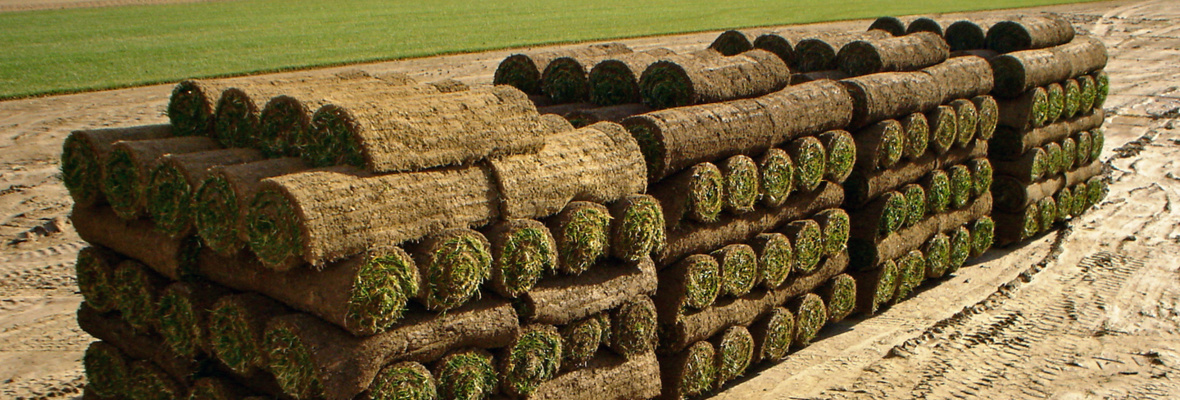

Lawn Care
Watering—Water is a basic requirement for a healthy lawn. Depending on weather/temperature conditions, soil type, and cultural practices, it may take up to an inch of water every week to benefit the entire root system. If your lawn is new, daily watering will be necessary for up to two weeks, to promote the establishment of roots. To water an established lawn apply ½ - ¾ inch of water every 3 – 5 days, this is usually sufficient. Time of day when watering can be important. Higher water pressure, less evaporation and less wind to affect sprinkler pattern make early morning watering most efficient. Watering in the middle of the day increases loss to wind and evaporation. This practice wastes water because longer watering times are required to achieve the same results. Evening watering may promote disease development, especially during hot, humid weather. Improper watering will make turf weak and shallow rooted, making it more susceptible to stress injury.
Mowing – The single most important cultural practice associated with turf maintenance is mowing. The average height of cut desirable for most home lawns in the New England region is 2 – 21/2 inches. Height of cut is also a crucial factor in a lawns appearance. A lower cutting height affects watering requirements, the root system, and promotes rapid drying of the lawn. Another critical factor in proper mowing is a sharp blade. Always make sure your blade is sharp before the start of the mowing season. As a general rule, grass should be mown so that not more than ¼ - 1/3 of the leaf blade is removed per mowing. Leave grass clippings on the lawn whenever possible. Clippings work as a slow release source of nutrients for the lawn. They do not increase the thatch layer. Mowing a different direction each time you mow will promote more even growth. Water your lawn before mowing if it shows signs of drought stress.
Insect control – Healthy, vigorous turfgrass is the first step to effective pest control. In order to properly treat for insects you must identify which kind of insect is causing the damage, surface or soil. If insecticides are used they must contact or penetrate the insect’s body to be effective. Timing is critical with insecticide applications. They should not be applied until insects are active on the surface or in the soil. A thorough watering may be needed to ensure that the product reaches the insect. Know what area of your lawn is under attack by pests. Usually sunny areas are attacked first by surface or soil insects. Follow label directions closely when using insecticides. Grass varities that contain endophytes reduce stress from surface feeding insects. Understanding the life cycle of an insect pest can be very helpful in the best possible control techniques.
Disease control - It takes three things to have a turf disease problem: A susceptible host; a pathogen; and the right environment. If any one of these is missing, there will be no disease development. Healthy, vigorously growing, adapted lawn grasses that are properly managed can best survive disease outbreaks. Proper lawn care includes fertilizing, watering, mowing, and insect and weed control. While proper care does not completely prevent diseases, it helps to curb them so that controls can be more effective if they become necessary. Many questions need to be answered before chemicals are applied to a lawn. You must be patient regarding lawn diseases. When weather conditions favoring the development of the disease pass, the disease will go into remission and generally the turf will recover.
Weed Control – The first step in determining any weed control program is to indentify the weeds in your lawn. Proper weed control treatments in the spring, called pre-emergent applications, should keep most common broadleaf weeds to a minimum. Proper cultural practices have a great effect on the health of your lawn. Most weeds thrive in poorly maintained soils. Read and follow all label directions to properly apply the right amount of chemical. The rule of thumb is that the weed must be actively growing to be controlled. Proper timing of weed applications will give you far greater success. Young, actively growing weeds are more susceptible to post-emergent treatment than larger, more mature weeds.
Pre-emergence control – In this process, a chemical is applied evenly over the turf and forms a barrier at the soil surface. The biggest problem with pre-emergence control is timing. Usually a split application will enhance control. Combination products are generally good if applied properly. Most are a combination of fertilizer and a pre-emergence herbicide. All pre-emergence will need to be watered into the soil.
Post-emergence control – This application should be made when weeds are visible, young, and actively growing. At this stage, young weeds are more susceptible to control and turfgrasses are better able to fill in the voids left by the dying weeds.
Contact Us Today!
New England Turf, Inc.
600 Waites Corner Rd
West Kingston, Rhode Island 02892
Phone: 800-451-2900
E-mail: info@newenglandturf.com
Special Facebook Promotion
Like us on Facebook and get 10% off your next order.

